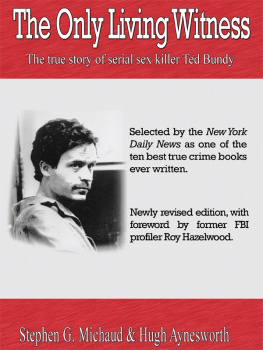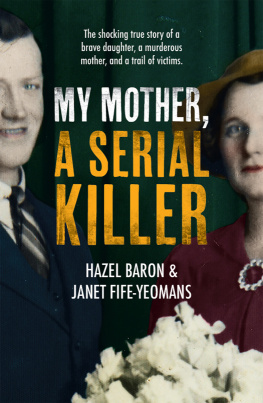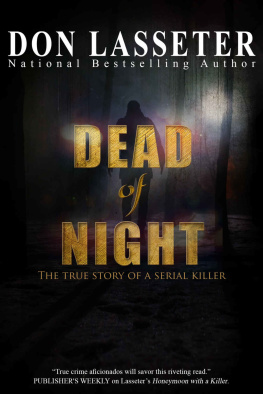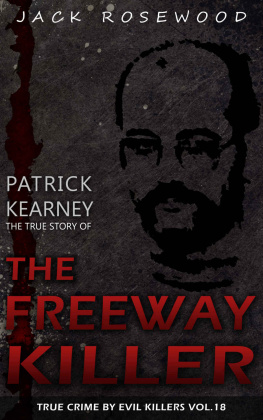Table of Contents
Most Berkley Books are available at special quantity discounts for bulk purchases for sales promotions, premiums, fund-raising, or educational use. Special books, or book excerpts, can also be created to fit specific needs.
For details, write: Special Markets, The Berkley Publishing Group, 375 Hudson Street, New York, New York 10014.

THE BERKLEY PUBLISHING GROUP
Published by the Penguin Group
Penguin Group (USA) Inc.
375 Hudson Street, New York, New York 10014, USA
Penguin Group (Canada), 90 Eglinton Avenue East, Suite 700, Toronto, Ontario M4P 2Y3, Canada
(a division of Pearson Penguin Canada Inc.)
Penguin Books Ltd., 80 Strand, London WC2R 0RL, England
Penguin Group Ireland, 25 St. Stephens Green, Dublin 2, Ireland (a division of Penguin Books Ltd.)
Penguin Group (Australia), 250 Camberwell Road, Camberwell, Victoria 3124, Australia
(a division of Pearson Australia Group Pty. Ltd.)
Penguin Books India Pvt. Ltd., 11 Community Centre, Panchsheel Park, New Delhi110 017, India
Penguin Group (NZ), 67 Apollo Drive, Rosedale, North Shore 0632, Auckland, New Zealand
(a division of Pearson New Zealand Ltd.)
Penguin Books (South Africa) (Pty.) Ltd., 24 Sturdee Avenue, Rosebank, Johannesburg 2196,
South Africa
Penguin Books Ltd., Registered Offices: 80 Strand, London WC2R 0RL, England
This book is an original publication of The Berkley Publishing Group.
Copyright 2007 by Stephen G. Michaud and Debbie M. Price.
All rights reserved.
No part of this book may be reproduced, scanned, or distributed in any printed or electronic form with
out permission. Please do not participate in or encourage piracy of copyrighted materials in violation of
the authors rights. Purchase only authorized editions.
BERKLEY is a registered trademark of Penguin Group (USA) Inc.
The B design is a trademark belonging to Penguin Group (USA) Inc.
First edition: October 2007
Library of Congress Cataloging-in-Publication Data
Michaud, Stephen G., 1948
The devils right-hand man : the true story of serial killer Robert Charles Browne / Stephen G.
Michaud and Debbie M. Price. 1st ed.
p. cm.
Includes index.
1. Browne, Robert Charles, 1952- 2. Serial murderersUnited StatesBiography.
3. MurderersUnited StatesCase studies. 4. Serial murder investigationUnited States.
5. MurderUnited States. I. Price, Debbie M. II. Title.
HV6248.B753M53 2007
364.1523092dc22
[B]
2007016642
PRINTED IN THE UNITED STATES OF AMERICA
10 9 8 7 6 5 4 3 2 1
http://us.penguingroup.com
PROLOGUE
As Scott Fischer remembers it, Robert Charles Brownes name first arose one morning in the spring of 2002 at the Old Heidelberg Pastry Shop, a well-worn Colorado Springs institution on a seedy stretch of South Tejon where the El Paso County sheriffs department cold case squad often gathered to shoot the breeze, discuss the news, and sometimes even get down to business.
That mornings cold case colloquy in the popular bakery-caf quickly veered away from practical matters. The three friends settled instead on the subject of serial murder, which was in the news. Another alleged itinerant killer had just been caught. At some point in the discussion Charlie Hess looked over the Formica tabletop at Lou Smit and asked, You ever work somebody who you just really thought was a serial killer?
Hess, then in his midseventies, a retired veteran of the FBI and CIA, was the senior member of the group. Lou Smit, a regionally renowned and controversial former police detective about ten years Hesss junior, didnt ponder the question long. Yeah, he answered, Robert Browne. I suspected he was a serial killer from the start.
Robert Browne was the sort of exotic and extremely dangerous felon for whom Lou Smit reserved the sobriquet tiga-gata, a cross between a tiger and an alligator, or the meanest animal anywhere. There had never been any doubt in Lous mind that Robert Browne was a tiga-gata.
Nor need he explain who Browne was to Hess and Fischer, the third member of the team, a retired newspaper publisher in his late fifties. The cold case squad and practically everyone else around Colorado Springs were keenly familiar with Robert Browne. Seven years earlier, the soft-voiced, green-eyed Louisianan had gone to prison for the abduction-murder of thirteen-year-old Heather Dawn Church. In a plea-bargain deal, Browne had been sentenced to life without parole. The horror of Brownes bold crime, which remained unsolved for three and a half years, shook the community, the state, and the country. Browne ultimately confessed to murdering Heather, but everyone knew that Lou Smit was the real reason Browne was caught; a point of personal annoyance to the killer, who claimed he was framed. Robert Browne bore the detective a deep enmity.
Besides their evident maturity, this unlikely-looking trio of would-be crime busters had three things in common. Each was a friend of John Anderson, the El Paso County sheriff who had brought them together and sworn them all in as honorary deputies. As retirees, each also had a lot of free time. And, as Sheriff Anderson saw it, each had the right personality to be part of a three-person cold case team devoted to solving the hoary old puzzlers that accrete like arterial plaque at law enforcement agencies everywhere.
Sheriff Anderson, who in 02 had one year left in office, was a strong proponent of modern police management and up-to-date forensic investigation. As a young Colorado Springs police detective in the seventies and early eighties, he had partnered with Lou Smit to work cold cases. The sheriff was well aware that cold cases, usually homicide investigations, can turn cold for any number of reasons, then begin to gather dust in the files or get lost altogether (a distressingly common occurrence). Still, he also believed that a lot of cold cases were just waiting for the right investigator or team of investigators to pick them up and solve them. As Lou Smit always liked to say, the leads were in the files.
Anderson felt his old friends would bring complementary skill sets to the task. Scott Fischer, the former corporate executive, was savvy with technology; his double major in college had been accounting and computer programming. After signing on as a sheriffs volunteer in 2000, Fischer also had gone through the deputy training program to become a reserve officer; he was sanctioned to carry a gun and make arrests. Lou Smit brought with him a deep well of investigative experience and a thorough knowledge of the criminal mind. Charlie Hesss forte was analysis; his key virtues were patience and determination. He had had three careers, at least: one, which lasted ten years, was as an FBI agent; during the war in Vietnam, hed worked for the CIA in the controversial Phoenix Program; and he later became a polygraph examiner attached to the San Diego Police Department. Now, despite a variety of health issues, he was ever avid about his fourth professional incarnation as a cold case sleuth.
Hess kept an ornamental hand grenade on his desk in the cold case room. There was disagreement whether the device was a memento or a metaphor. On the wall above his desk hung a framed copy of his CIA performance review for the first nine months of 1968.
Subject is impatient with incompetence and with people who are insincere in their work, the final paragraph read in part. This characteristic occasionally creates an impasse which can only be resolved by removing one of the parties from the scene of action.... He is invariably right in his assessment of the situation, and thereby makes it more difficult to criticize him for his impatience.










